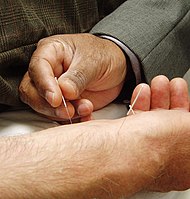
Ultrasensitive NGS MRD assessment in Ph+ ALL: Prognostic impact and correlation with RT-PCR for BCR::ABL1.
Sign Up to like & getrecommendations! Published in 2023 at "American journal of hematology"
DOI: 10.1002/ajh.26949
Abstract: Reverse transcription polymerase chain reaction (RT-PCR) for BCR::ABL1 is the most common and widely accepted method of measurable residual disease (MRD) assessment in Philadelphia chromosome-positive acute lymphoblastic leukemia (Ph+ ALL); however, RT-PCR may not be an… read more here.
Keywords: ngs mrd; pcr bcr; pcr; bcr abl1 ... See more keywords

High Sensitivity NGS Analysis of MRD in CLL Patients Prospectively Treated with Ibrutinib Plus FCR (iFCR)
Sign Up to like & getrecommendations! Published in 2019 at "Blood"
DOI: 10.1182/blood-2019-124305
Abstract: Background Studies from the chemoimmunotherapy (CIT) era and more recently with venetoclax have demonstrated the correlation between minimal residual disease (MRD) response measured by at least four-color flow cytometry (FC), and progression free (PFS) and… read more here.
Keywords: research; sensitivity; ngs mrd; research funding ... See more keywords

Moffitt Cancer Center 2-Year Single-Institution Experience with Next-Generation Sequencing Minimal Residual Disease Detection: Clinical Utility, Application, and Correlation with Outcomes in Plasma Cell and Lymphoid Malignancies
Sign Up to like & getrecommendations! Published in 2019 at "Blood"
DOI: 10.1182/blood-2019-129846
Abstract: Background: Measuring residual disease during the continuum of care is fundamental to oncology practice. In particular, minimal residual disease (MRD) assessments and trends over time can help inform clinical management, including change in treatment regimen… read more here.
Keywords: cell; disease; ngs mrd; research funding ... See more keywords

Clinical implications of sequential MRD monitoring by NGS at 2 time points after chemotherapy in patients with AML.
Sign Up to like & getrecommendations! Published in 2021 at "Blood advances"
DOI: 10.1182/bloodadvances.2020003738
Abstract: Next-generation sequencing (NGS) has been applied to measurable/minimal residual disease (MRD) monitoring after induction chemotherapy in patients with acute myeloid leukemia (AML), but the optimal time point for the test remains unclear. In this study,… read more here.
Keywords: time points; time; ngs mrd; time point ... See more keywords